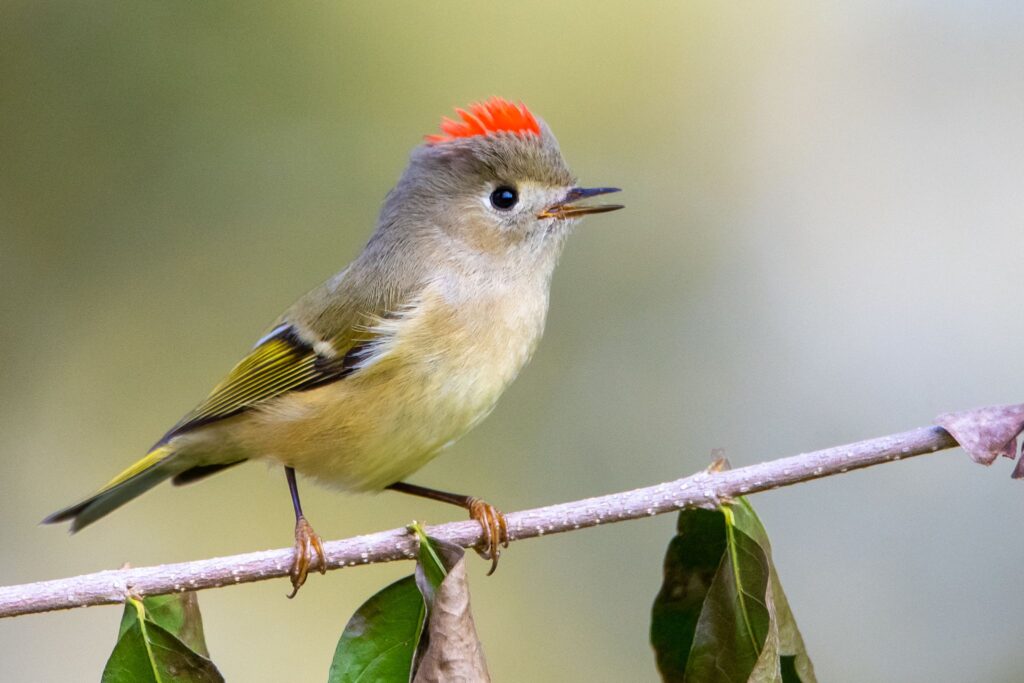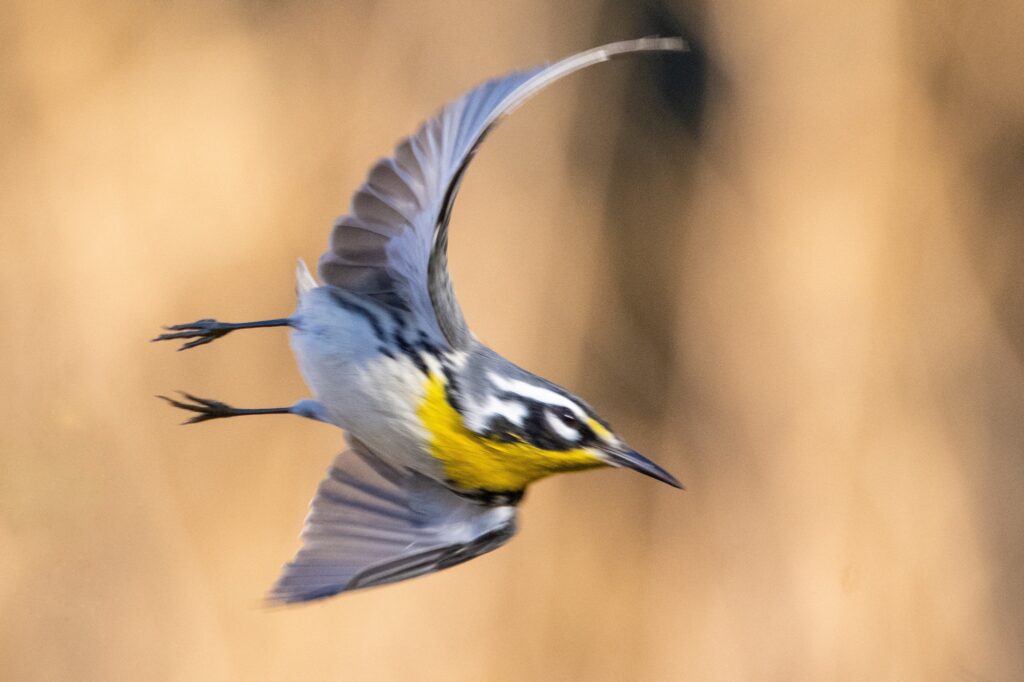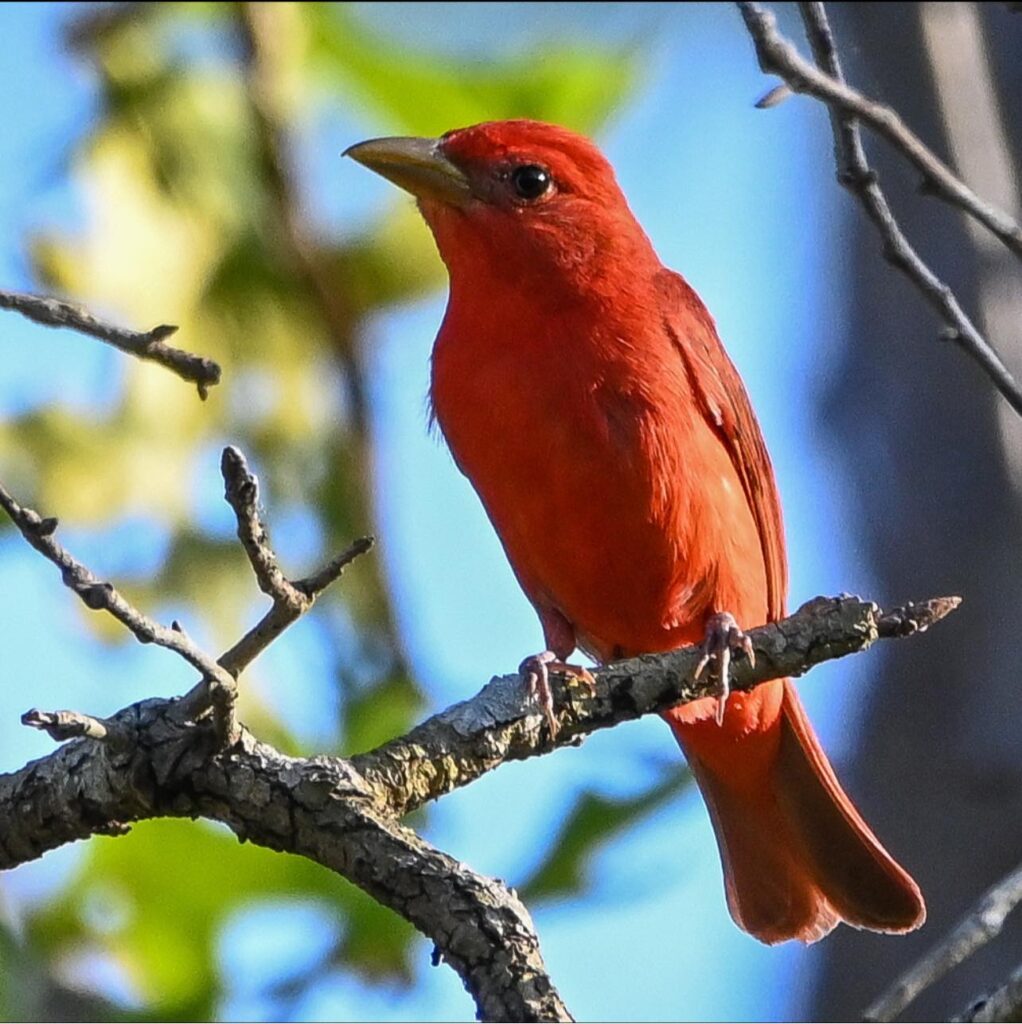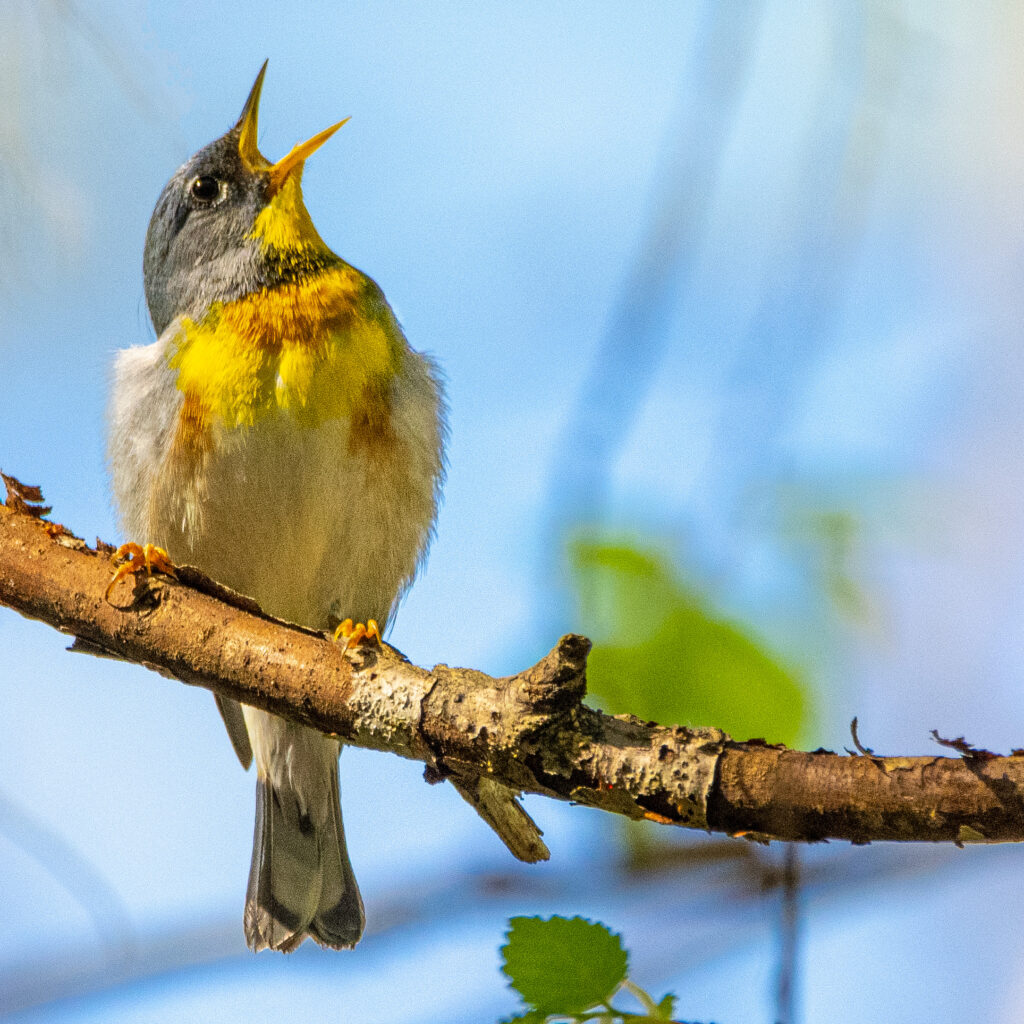Spring is coming and with it the desire to get out into the fresh air, shake off the winter doldrums, and see some beautiful nature. What better way than birding? Walking beautiful nature trails and catching a glimpse of those specks of living color can bring joy into the day like nothing else.
Fort King National Landmark has a great opportunity for bird watching: the Nature Trails. You can start at the East Trailhead or West Trailhead, and follow the .7 miles path around the Fort and through the forest.
What Birds Might You See?
While you’re enjoying the beauty around you, be sure to keep your eyes out for all sorts of birds. You might encounter owls, woodpeckers, and passerines (songbirds) as you travel. Birders at Fort King have found these beauties as they traversed the trail:
Red-Eyed Vireo

The Red-eyed Vireo is an olive-green bird that can be difficult to spot due to its plain coloring. Adults have a faint red eye, while immature birds have a brown eyes, with a dark stripe running through and above the eye. They are larger than warblers and have a thicker bill. Red-eyed Vireos can often be found in mature deciduous forests and they have an unmistakable voice that is often described as a repeating musical phrase.
Black and White Warbler

The Black and White Warbler is a distinctive bird, with bold black-and-white stripes covering its entire body. Males have a black throat and cheek, while females and immature birds have a white throat and paler cheek. This warbler creeps along branches like a nuthatch, searching for insects Listen for its high-pitched “squeaky-wheel” song to identify it.
Ruby-Crowned Kinglet

The Ruby-crowned Kinglet is a tiny, lively bird with a loud and distinctive song. Its body is mostly plain olive, but has brighter green wing and tailfeathers. The male Ruby-crowned Kinglet has an impressive ruby-colored crest which is usually concealed, but flares up when it feels threatened. It’s often seen flitting around in coniferous forests, and forages for food close to the ground. Its song is composed of short, harsh call notes that are usually repeated.
Yellow-Throated Warbler

The Yellow-throated Warbler is a slender, long-billed warbler with a distinctive pattern. Look for the yellow throat, black mask, and black streaks on the sides. All plumages are quite similar, while females and immature birds may show a light buffy wash on the sides. These birds forage by creeping along branches and hanging upside-down. They can often to be found in palm trees. Listen for their sweet descending song, complete with sharper notes at the end!
Summer Tanager

The Summer Tanager is a large and eye-catching bird with adult males boasting a stunning all-over-red plumage and immature males featuring a unique yellow-olive color. Females, on the other hand, can be anywhere from a pale, dull yellow to a brighter orange. Listen closely for the signature call that sounds like a “pit-a-tuck” in a short, descending rattle.
Northern Parula

The Northern Parula is a delightful little warbler, sporting sky-blue-gray feathers on its back and a yellow breast and a bicolored beak. Adult males also have a black and rufous breast band that really stands out. They love to nest among the moss and old-man’s-beard in wooded habitats near bodies of water. When they sing, it’s a delightful buzzy, zippery trill. So if you ever hear this sweet sound, you know it’s the lovely Northern Parula!
Preparing for A Great Day
Exploring Fort King is a great way to spend a peaceful day outdoors! Get ready by dressing in comfortable clothing, packing water and insect repellent, and bringing your binoculars and camera. Be mindful of the terrain and wildlife, and remember to respect the historic landmark, not dig, and keep your pup on a short leash and pick up their waste. Lastly, follow the “pack it in, pack it out” rule and be aware of the quick-exit arrows along the trails. With all the essentials in tow and safety in mind, you’ll be ready for an amazing adventure!


